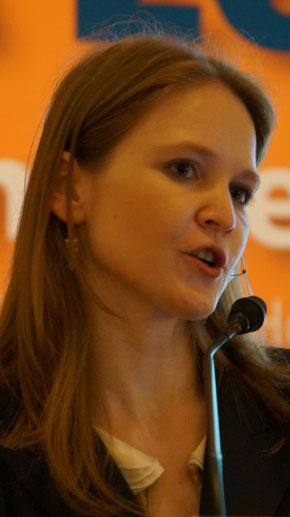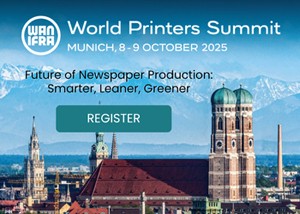There was a good deal of consensus on the first day of WAN-Ifra’s Publish Asia conference in Hong Kong (writes Peter Coleman).
The chief executive of the special administrative region Leung Chun-ling agreed with WAN-Ifra president Tomas Brunegard about the value of media freedom, adding that it was “about our way of life”.
A trio of panelists agreed that maintaining trust was a priority in the development of native advertising. And even Sverre Munck conceded to Doug Wills, managing editor of Lebedev Holdings, publisher of the London Evening Standard, that there could be local circumstances under which print might survive and grow.
Wills is due to address the conference today (Friday) while Munck, executive vice president of Schibsted Media, was opening keynote speaker in a programme packed with industry leaders from all over the world.
Munck had hope for those who had seen newspapers’ “natural monopoly” disappear: “I’m an optimist and believe it will be possible to survive and thrive,” he says.
Scandinavian-turned-global publisher Schibsted – which has four brands in Asia under a joint venture with Singapore Press Holdings – now derives half its revenue and “more than half its profits” from digital publishing.
But he was also a realist, conceding that the once hugely-successful VG print edition might have to be discontinued in four or five years. “Disengaging is as important as engaging,” he had told delegates earlier in the context of the group’s decision to abandon its social network before it was overtaken by Facebook.
The VG website – read by 2.2 million people – is, of course, the “print killer”, its mobile site accounting for half of the country’s non-Google advertising. And Schibsted continues to have success with print-based launches, most recently with Aftenposten Junior, which has grown 30,000 subscribers.
Two topics everyone in Hong Kong wanted to learn about were big data and native advertising. On the latter, Publish Asia brought together three market leaders – Michelle Haase for the New York Times, Mo Chung for Next Mobile and Inez Albert for The Economist Group to explain and discuss the benefits of the emerging advertising format.
The consensus here was that retaining reader trust was a priority, but that the format offered advertisers the opportunity to be associated with high quality content. “It’s about storytelling,” regional digital sales director Inez Albert said of a project for GE. Native advertising as a whole, however, was “advertorial given a good shake,” she says.
The New York Times might use an advertiser’s content, but equally would be willing to knock back business which did not align with their standards. “We want to provide advertisers with an optimal service,” Michelle Haas told delegates.
Later, South China Morning Post chief executive Robin Hu was to observe that native advertising was “the centerpiece that will be the salvation for us”.
Concurrent sessions tackled partnering pure players – and included a Google partnership breakout session – the importance of scale, advertising networks and newsroom innovation. Big data is top of the agenda when the conference resumes this morning.
Pictured left: NYT regional advertising manager Michelle Haase
On our homepage: The Economist’s Inez Albert – “native advertising is advertorial given a good shake”
















Comments